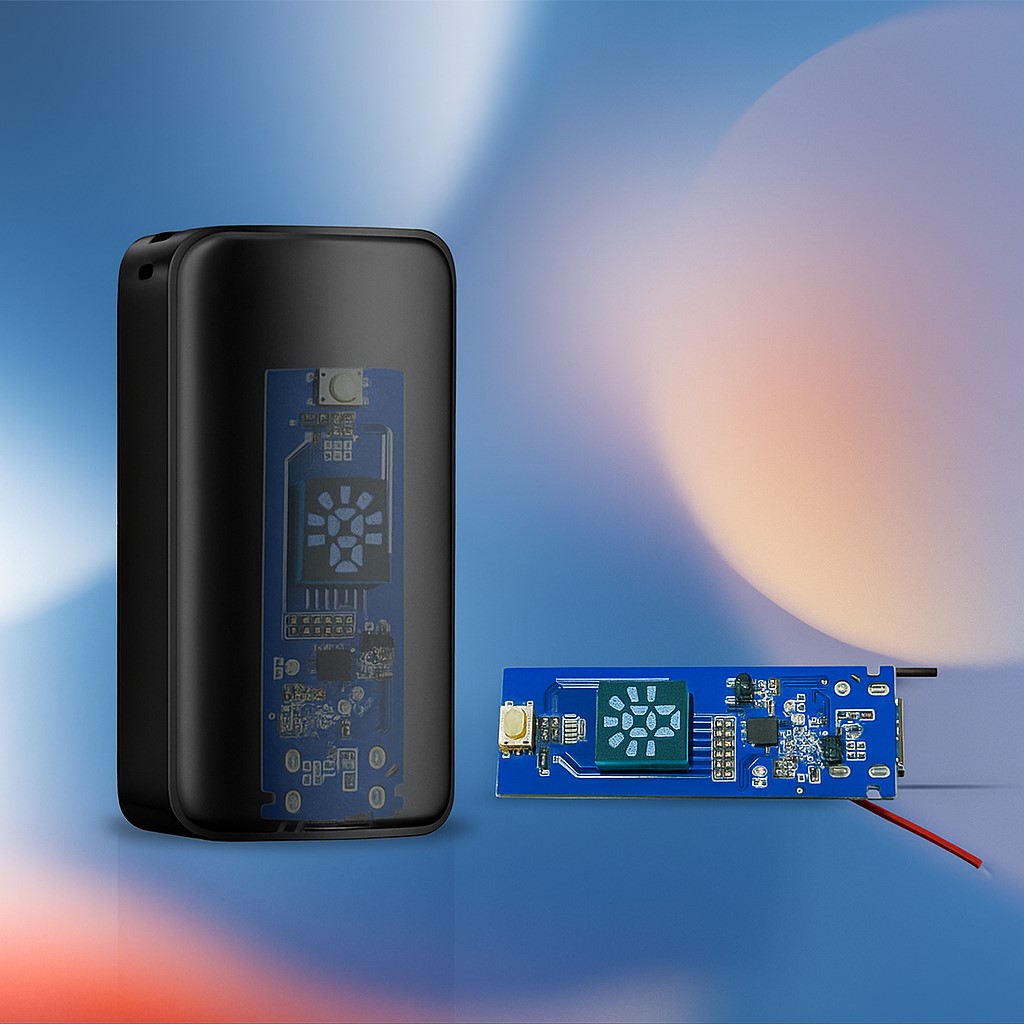The Dual Challenge of Refillable Vape Devices
Refillable fruit-flavored vapes are reshaping the e-cigarette industry. These devices offer cost-effective, eco-friendly alternatives to disposables. However, they also introduce new design challenges: e-liquid leakage and short battery life. For manufacturers, solving both issues is essential to building trust and ensuring product longevity.
At the heart of these challenges lies the printed circuit board (PCB)—the nerve center of the device. By designing highly integrated PCB modules with leak prevention features and low-power components, suppliers like RIMYI can offer complete, scalable solutions. This article explores how PCB innovation is reshaping the performance and reliability of refillable vapes.
The Rising Importance of Refillable Fruit E-Cigarette Solutions
The global demand for refillable e-cigarettes continues to rise. Compared to disposable products, refillables support flavor customization, lower carbon impact, and longer device lifespan. However, these benefits only materialize when the device works reliably over time.
Unlike closed pod systems, refillable vapes are exposed to greater wear from user handling. Improper sealing or poorly designed circuitry can cause e-liquid seepage, which leads to short circuits, battery damage, and device failure. Therefore, ensuring electrical stability and power optimization must be considered from the PCB design stage.
Understanding the Source of E-liquid Leakage
E-liquid leakage often results from capillary effects, condensation, or improper gasket sealing. Once moisture contacts electronic circuits, it can corrode components or cause shorts. In refillable models, users frequently interact with the tank system, increasing leak risk due to repeated opening and closing.
To prevent failure, anti-leak vape PCB design involves:
-
Strategic component layout to isolate sensitive areas
-
Nano-coating of the PCB surface to resist moisture
-
Dedicated leak channels to drain away stray fluid
-
Separation of the e-liquid chamber and control unit
This design philosophy demands close collaboration between hardware engineers, structural designers, and fluid dynamic analysts.
Power Efficiency: The Achilles’ Heel of Compact Vape Devices
Battery runtime is another critical concern. Users expect refillable vapes to deliver consistent performance across multiple charging cycles. However, compact battery sizes limit capacity, and power-hungry chips drain cells rapidly.
A low-power vape PCB addresses this with:
-
Ultra-low-power microcontrollers (MCUs) that enter sleep mode when idle
-
Dynamic power scaling, adjusting performance based on draw activity
-
Efficient power path management, optimizing charge/discharge cycles
-
Battery protection circuits to prevent overcharging and overheating
Collectively, these features extend standby time, improve usage cycles, and preserve battery health.
The Role of the Battery Management Circuit
A robust battery management circuit is the backbone of power stability. This circuit monitors voltage, current, and temperature parameters in real time. It ensures safe charging and balanced discharge under varying load conditions.
Key components typically include:
-
Lithium battery protection ICs
-
Temperature sensors
-
MOSFET-based load switching
-
Dual-channel charging controllers
Modern vape PCBs also integrate charging port interfaces, enabling Type-C fast charging without compromising circuit safety.
How PCB Architecture Solves Two Problems at Once
To solve leakage and power issues simultaneously, PCB design must become more modular and intelligent. This includes:
-
Layer separation, where the power system and sensor logic are split
-
Micro-spacing insulation, which prevents current bridging due to fluid
-
Integrated sensing modules, like puff counters and airflow detectors
-
Thermal cutoff switches that shut down circuits under heat stress
Case Study: Refillable Fruit Vape Circuit Board from RIMYI
One of our refillable fruit e-cigarette solutions integrates:
-
A low-power STM32-based MCU
-
A dual-battery protection IC
-
An embedded anti-leak sensor shield
-
Coated traces with conformal sealant
-
A puff cycle memory module for usage control
Through simulation and lab testing, this board reduced failure from liquid ingress by 80%. Meanwhile, battery efficiency improved by 40% compared to standard vape boards. The result: longer product lifespan and lower RMA rates.
Evolving Trends in Refillable Vape PCB Development
As regulations and user demands evolve, PCB designs must keep pace. Upcoming trends include:
-
Smart PCB diagnostics via Bluetooth modules
-
Multi-flavor selection modules with selector buttons
-
Cloud-based usage tracking for user analytics
-
ESD-resistant routing for high-reliability markets
-
RoHS and UL-certified layouts to pass stricter export requirements
In addition, AI is entering PCB design. Algorithms can now simulate e-liquid leak paths and suggest optimal circuit isolation zones before prototyping.
Sustainability Through Smarter Electronics
Refillable fruit e-cigarette solutions must also align with environmental goals. Efficient PCB design reduces electronic waste, while intelligent battery management extends product usability. Fewer malfunctions mean fewer discarded devices—directly contributing to sustainability.
Moreover, repairable and upgradeable board layouts allow long-term use. At RIMYI, we are actively developing modular PCB formats where only the power unit or sensor module needs replacement.
Challenges in Scalable Production
While high-performance PCBs offer many benefits, mass-producing them cost-effectively remains complex. Manufacturers must balance component sourcing, yield rates, and thermal validation. PCB suppliers must also support various form factors across models.
RIMYI addresses this with:
-
In-house SMT lines for rapid prototyping
-
Flexible BOMs based on client specifications
-
Batch-based thermal aging tests
-
Full ISO and CE certification support
These capabilities ensure scalable, export-ready designs tailored to global vape brands.
Conclusion: Enabling the Future of Fruit-Flavored Vape Hardware
Refillable fruit vape devices are the future—but only when backed by stable electronics. Through anti-leak PCB design and low-power architecture, manufacturers can overcome critical pain points in reliability and runtime. RIMYI remains committed to delivering customized PCB solutions for next-generation e-cigarette innovation.
As demand grows for smarter, safer, and greener vaping hardware, the role of PCB engineering will only deepen. By combining circuit intelligence, environmental resilience, and power efficiency, we empower brands to build trusted, sustainable products that meet the expectations of both users and regulators.

